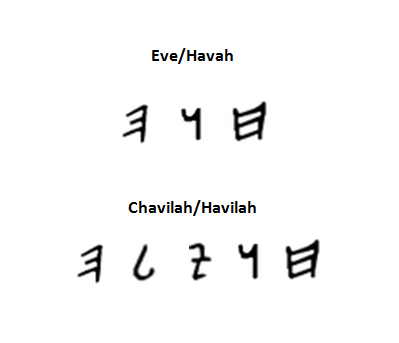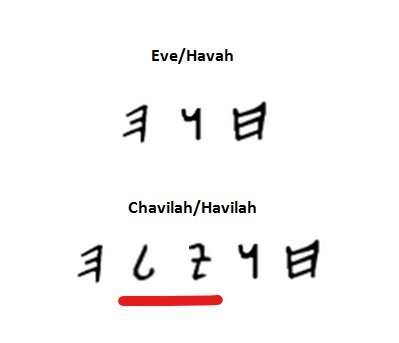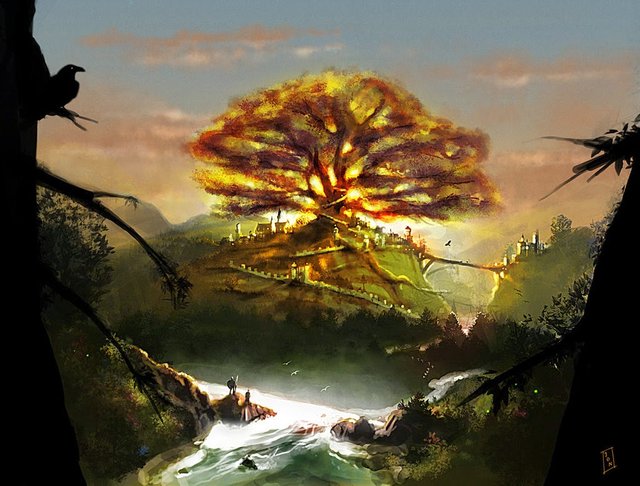Bible Study 102.2, The Garden of Eden, Commentary
I hope everyone is well! Today I'll do a little commentary on the second part of our Bible study. This will go into certain finer details which I touched upon during the main post.
Genesis 2 is a beautiful narrative about the creation of the garden of paradise, man and woman, and the harmony which God imbued into everything. It describes a world without violent storms, without pain or carnivorous appetites. You may have noticed that the images I gave in that article were often fantastical and magical. The reason for this is to encourage us to use our imagination and get in touch with the idea which the text is trying to convey - the Garden of Eden is a place which none of us have ever seen and cannot possibly imagine. It was a place of wonder which looked nothing like what we have experienced in our lives. As one article puts it:
From that very first garden all the gardens of the world spring forth like small imperfect pieces of a lost paradise. - Faena Aleph
This is a profound statement which echoes the times when Jesus himself often retreated to the Mount of Olives, the Garden of Gethsemane and other green places, in order to communicate with his Father in peace. Genesis is not simply a history of mankind's relations with God, but also a tool to plant the seed of melancholy towards our lost heritage.
Those who have read the Gospels will recall that when Jesus passed away on the cross, the veil which separated the Holy of Holies in the Temple was torn in two, from top to bottom. The most Holy place was the centre of the Temple, where the Arc of the Covenant was the throne of God's presence. It was separated from the rest of the world with a thick veil, which God tore down to show that the separation was finally removed. As the 16.5.1. commentary states, this division was completely absent in the Garden, which was evident from the nakedness of the man and woman. They were not ashamed because they were with God.
In my post I mentioned a little fun fact about the land which the river Piyshon borders, namely Havilah. In this commentary I would like to get a little more into language semantics. I pointed out to a similarity to the origin of Havah (Eve) and Havilah. The actual roots of those names are lost and unknown. However, it might be possible to get some insight by looking at their original Paleo-Hebrew inscriptions. For those who are unfamiliar with Paleo-Hebrew, I will only explain that every letter/symbol has a meaning. The meaning of the word, or the name, can often be guessed by the meanings of the characters it is written by. For example, the Aleph looks like a horn and means first, leader, strength, crown. The Bet looks like a tent, or a house, and does carry the same meaning. The Aleph and Bet put together - Ab, or Abba - would mean 'Leader of the house', or something similar. Abba is the word for 'Father'.
This is only one example of the complexities of the language. Now, lets look at what we can figure out by looking at these new, unfamiliar names.

The above is how Havah is spelled, while the one bellow is Havilah. Bear in mind, Paleo-Hebrew, like modern Hebrew, is written Right-to-Left. Havah is spelled, from right to left, 'Het' 'Vav' 'Heh'. It is immediately obvious that Havilah has a very similar spelling, since 3 of its signs are the signs which make up Havah. There are only 2 which are different:

From right to left, they are 'Yod' and 'Lamed'. Yod means 'work' or 'hands', while Lamed means 'staff' or 'control'. Now, lets put this into context with a reminder of what Genesis says:
The name of the first is Piyshon: that is it which compasses the whole land of Chaviylah, where there is gold; And the gold of that land is good; there is bdellium and the onyx stone.

This land was beautiful and full of riches. It would make sense that its name would include the sign for 'work' and manual labour. It also contains 'staff', or 'control'. The staff was a symbol of authority and ownership. These two are contained in the middle of Havah's name. As such, it might be interesting to speculate that this land was dedicated to Eve herself, as a beautiful gift. If this is true, then the first pages of the Bible begin with one of the most beautiful acts of love. This, of course, is speculation, but I believe it might give us some deeper insight into how we should treat one another. If Adam saw this rich land and his first thought was to name it and dedicate it to the woman who would bring forth the entire human race, then it might be an important life lesson - beautiful things should not be simply desired, but also shared in love.
While we're on the subject of love, I also made a note about the interesting phrase = 'help meet'. Let us remind ourselves of the first time we encounter it:
And Yahuah Elohim said "It is not good that the man should be alone; I will make him a help meet for him."
The Merriam-Webster dictionary defines the phrase as 'helpmate', meaning 'one who is a companion and helper; especially: wife'. Newer versions may say 'helper suitable for him'. It sounds simple, however, as is often the case, it may not be entirely accurate. 'Help meet' is derived from 'ezer' and 'neged'. 'Ezer' means helper but the word comes from the root word 'azar', which in turn can mean 'ally', 'support', 'restrain', 'protect'. 'Neged' means 'before', 'against', 'opposite', and comes from the root 'nagad', which also means 'told', 'answered', 'another', 'confront', 'remind', amongst others.
We can quickly arrive at a very complex idea of the relationship the woman has to the man, just by the words which are used to describe the reason for her creation. Women are men's helpers, they support, nurture and protect them. But they are also their opposites, their mirror images. Heather, at the Women in the Scriptures blog site, states the following:
This image of Eve is not of a helpless, submissive wife but a capable Queen with the dignity to stand beside her King, who's side she was made from. If we think back to the order of creation, Eve was God's last creative act. She was the crown of Adam and the world which he had dominion over. And just as she was born out of a Man's flesh, so Adam, who was born of dust, would be saved by another Man, who would come out of another woman's flesh. So this prophetic cycle is complete in the saving grace of the last Adam, created from the flesh of a woman named Mary by our Creator.
Genesis 2 is the beginning of mankind. starting with the pure love of our great, great, great, great grandparents, Adam and Havah. It is a beautiful story of two who stuck together even when they made the greatest mistake in their life, sharing both riches and poverty. I am reminded of the Orthodox Church's wedding practice, where the groom and the bride both wear crowns which are interchanged between them.
Much more could be said about other aspects of this chapter, but I will leave it at this for today.

Thank you, friend @beltashazzar, for this very interesting study.
I had not before heard of or seen the connection between Havah and Havilah... Very, very interesting!
One of my great interests of many years has been exploring what our future will be like as God's beloved people. Thinking about the beginnings helps me in that task.
😄😇😄

@creatr Thank you for appreciating my content! ^_^ Just like you, I've discovered that the best way to understand God's plan is to look at how he did things in the beginning. And we are doing the right thing! If we remember Isaiah's words:
"Remember the former things of old; for I am El and there is none else; I am Elohim and there is none like me; Declaring the end from the beginning, and from ancient times the things that are none yet done, saying 'My counsel shall stand, and I will do all my pleasure'."
I really hope I can bring more to the table so that we can all benefit! I, myself, was deeply interested when I found out the similarity in the names of Havah and Havilah. ^_^